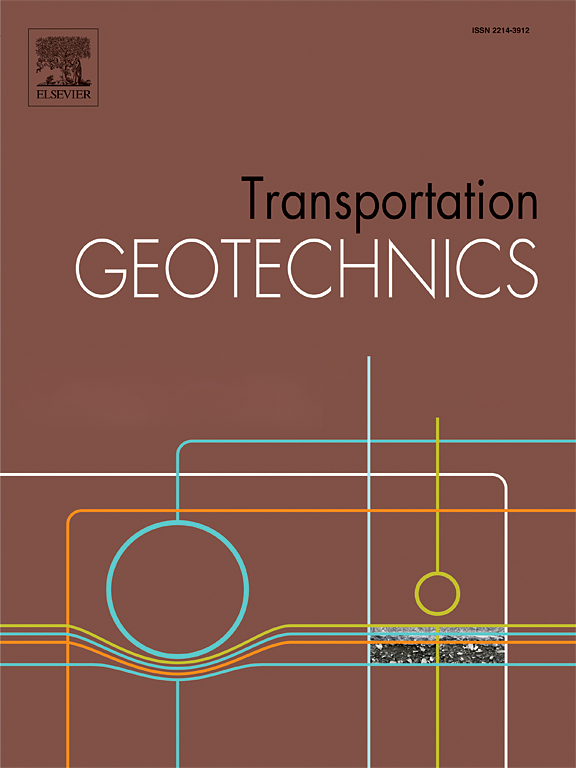Experimental assessment of freeze–thaw characteristics and microscopic mechanisms of coal-based solid waste improved loess filler
IF 4.9
2区 工程技术
Q1 ENGINEERING, CIVIL
引用次数: 0
Abstract
To tackle freeze–thaw damage in loess layers by seasonal freeze–thaw cycles (FTC) and the growing coal-based solid waste crisis in Northwest China, we propose using coal-based solid waste to enhance loess for more stable, sustainable infrastructure. This paper investigates the freeze–thaw behaviors and microscopic mechanisms of loess modified with 6%, 15% coal gasification slag (CGS) and 30%, 50% coal gangue (CGA), using FTC tests, SEM analysis, and CT scans. Key aspects were analyzed include frost heave, thaw settlement, temperature, moisture distribution, and microstructural changes. The results show that adding 15% CGS reduces average frost heave and thaw settlement by 72.6% and 70.8% during the first 2 FTC, while 50% CGA cuts frost heave by 62.5% over 5 FTC, demonstrating strong potential for freeze–thaw resistance. The addition of CGS and CGA can also reduce temperature fluctuation and thermal conductivity of loess, enhancing the internal temperature stability. Moreover, adding 50% CGA could help regulate water content distribution after FTC and densify the structure of improved loess, while adding CGS leads to aggregates formation within modified loess particles.
煤基固体废弃物改性黄土填料冻融特性及微观机理试验评价
为了解决季节性冻融循环(FTC)对黄土层的冻融破坏和西北地区日益严重的煤基固体废物危机,我们提出利用煤基固体废物增强黄土,以获得更稳定、可持续的基础设施。通过FTC试验、SEM分析和CT扫描,研究了6%、15%煤气化渣(CGS)和30%、50%煤矸石(CGA)改性黄土的冻融行为和微观机理。分析的关键方面包括冻胀、融化沉降、温度、水分分布和微观结构变化。结果表明,在前2次FTC中,添加15%的CGA可使平均冻胀量和融化沉降量分别减少72.6%和70.8%,而在5次FTC中,添加50%的CGA可使平均冻胀量和融化沉降量减少62.5%,显示出较强的抗冻融潜力。CGS和CGA的加入还可以减小黄土的温度波动和导热系数,增强内部温度稳定性。此外,添加50%的CGS有助于调节FTC后改良黄土的含水量分布,使其结构致密化,而添加CGS可使改性黄土颗粒内形成团聚体。
本文章由计算机程序翻译,如有差异,请以英文原文为准。
求助全文
约1分钟内获得全文
求助全文
来源期刊

Transportation Geotechnics
Social Sciences-Transportation
CiteScore
8.10
自引率
11.30%
发文量
194
审稿时长
51 days
期刊介绍:
Transportation Geotechnics is a journal dedicated to publishing high-quality, theoretical, and applied papers that cover all facets of geotechnics for transportation infrastructure such as roads, highways, railways, underground railways, airfields, and waterways. The journal places a special emphasis on case studies that present original work relevant to the sustainable construction of transportation infrastructure. The scope of topics it addresses includes the geotechnical properties of geomaterials for sustainable and rational design and construction, the behavior of compacted and stabilized geomaterials, the use of geosynthetics and reinforcement in constructed layers and interlayers, ground improvement and slope stability for transportation infrastructures, compaction technology and management, maintenance technology, the impact of climate, embankments for highways and high-speed trains, transition zones, dredging, underwater geotechnics for infrastructure purposes, and the modeling of multi-layered structures and supporting ground under dynamic and repeated loads.
 求助内容:
求助内容: 应助结果提醒方式:
应助结果提醒方式:


